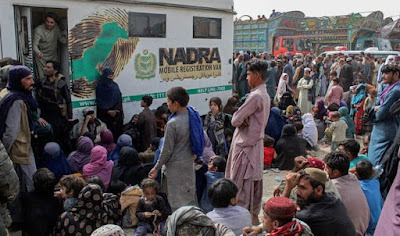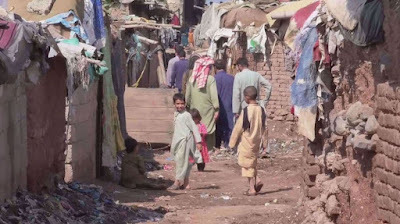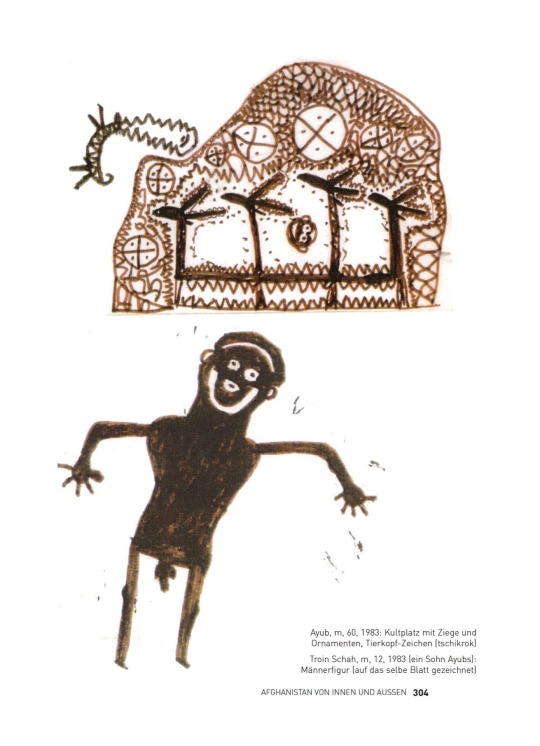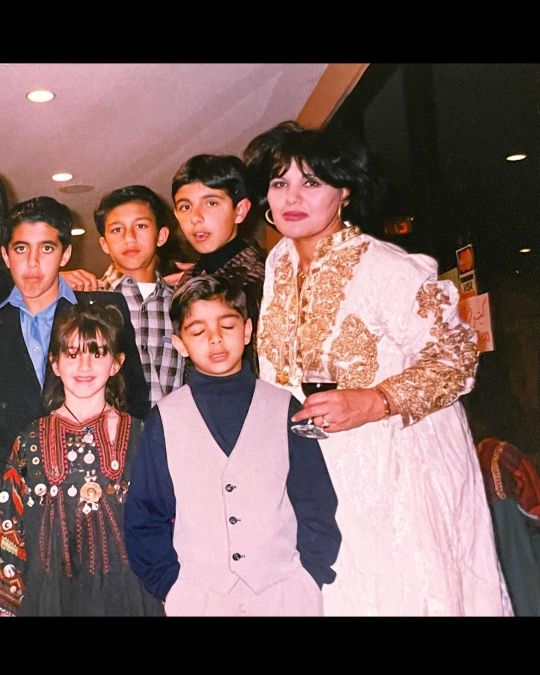#afghan children
Photo

Girl standing with her little sister in front of her home in a Kabul Informal Settlements (KIS). Most inhabitants of the Kabul Informal Settlements are internally-displaced people (IDPs) fleeing conflict, and insecurity in their provinces of origin, or returnees from Pakistan and Iran.
Source: Oriane Zerah
#afghanistan#afghan#afghan people#afghan children#afghan girl#asia#asian#central asia#south asia#kabul#poor#poverty#children#girl#baby#sister#family#refugee#afghan refugee#war#conflict#photojournalism
43 notes
·
View notes
Text
اونے پونے افغان ہمارے کس کام کے

دو ہزار دس کے سیلابِ عظیم میں چوتھائی پاکستان ڈوب گیا۔ دیہی علاقوں میں پھنس جانے والوں کے ہزاروں مویشی سیلاب میں بہہ گئے اور جو بچ گئے انھیں بھی اپنے خرچے پورے کرنے کے لیے اونے پونے بیچنا پڑا۔ سیلاب کے ماروں کے ہم زبان و ہم علاقہ و ہم عقیدہ بیوپاریوں نے مصیبت کو کاروبار میں بدل دیا۔ میں نے مظفر گڑھ کے سیلاب زدہ علاقوں میں دیکھا کہ جانوروں کے بیوپاری حفاظتی بندوں پر گدھ کی طرح منڈلا رہے تھے۔ جس گائے یا بیل کی قیمت عام حالات میں پچاس ہزار روپے تھی۔ اس کی بولی پندرہ سے بیس ہزار روپے لگائی گئی۔ کوئی بھی بیوپاری پانچ ہزار کی بکری اور دنبے کا ساڑھے سات سو روپے سے زائد دینے پر آمادہ نہیں تھا۔ جبکہ مرغی کی قیمت پچاس سے ستر روپے لگائی جا رہی تھی اور سیلاب زدگان کو اس بلیک میلنگ سے بچنے کا کوئی راستہ سجھائی نہیں دے رہا تھا۔ یہ قصہ یوں یاد آ گیا کہ ان دنوں یہ خبریں تواتر سے آ رہی ہیں کہ جن افغان مہاجرین کو پاکستان میں جنم لینے والی دوسری، تیسری اور چوتھی نسل کے ہمراہ افغانستان بھیجا جا رہا ہے۔ انھیں فی خاندان صرف پچاس ہزار روپے لے جانے کی اجازت ہے۔ وہ اپنے مویشی نہیں لے جا سکتے۔
بہت سوں نے پاکستان میں مقامی خاندانوں میں شادیاں کیں۔ ان کے بچے اور پھر بچوں کے بچے ہوئے۔ انھوں نے ٹھیلے لگائے، دوکانیں کھولیں، ٹرانسپورٹ کا کام کیا۔ بہت سے مقامی بیوپاری ان کے لاکھوں روپے کے مقروض ہیں۔ پاکستانی شہری نہ ہونے کے سبب جن مقامی لوگوں کی شراکت داری میں انھوں نے کاروبار کیا۔ ان میں سے بہت سوں نے اب آنکھیں ماتھے پر رکھ لیں۔ ان کے گھروں اور دوکانوں کی قیمت ساٹھ سے ستر فیصد تک گر چکی ہے۔ ان مہاجروں کو نہیں معلوم کہ سرحد پار پچاس ہزار روپے سے وہ کیا کام کریں گے۔ ان کی زیرِ تعلیم بچیاں افغانستان کے کس سکول میں پڑھیں گی؟ جن خاندانوں کی کفالت عورتیں کر رہی ہیں ان عورتوں کو افغانستان میں کون گھروں سے باہر نکلنے دے گا؟ یہ بھی ہو سکتا تھا کہ ان پناہ گزینوں کو تمام ذاتی سامان کے ساتھ ساتھ املاک اور کاروبار کی فروخت سے ملنے والے پیسے ہمراہ لے جانے کی اجازت دے دی جاتی۔ یہ بھی ممکن تھا کہ ان سب کو دوبارہ اٹھا کے کیمپوں میں رکھ دیا جاتا اور ان کیمپوں کی ذمہ داری مشترکہ طور پر قانون نافذ کرنے والوں اور اقوامِ متحدہ کے ادارے برائے پناہ گزیناں ِ( یو این ایچ سی آر ) کے سپرد کر دی جاتی۔ اس بابت ایرانی ماڈل کا مطالعہ کرنے میں بھی کوئی حرج نہ تھا۔

یہ بھی ممکن تھا کہ تب تک انتظار کر لیا جاتا جب تک پاکستان سمیت عالمی برادری کابل حکومت کو سفارتی سطح پر تسلیم نہ کر لیتی۔ یا افغانستان میں انسانی حقوق کے حالات سے مطمئن نہ ہو جاتی اور اس کے بعد اقوام ِ متحدہ کے متعلقہ اداروں کے مشورے سے مہاجرین کی واپسی کی کوئی باعزت پالیسی مرتب کر کے اس پر خوش اسلوبی سے عمل کیا جاتا تاکہ بہت سے عالمی ادارے اور حکومتیں ان مہاجرین کی وطن واپسی کے بعد انھیں اپنے پاؤں پر کھڑا رہنے کے لیے کچھ نہ کچھ بنیادی سہولتیں دان کر دیتیں۔ مجھے ذاتی طور پر کسی غیرقانونی تارکِ وطن سے ہمدردی نہیں۔ مگر ہر سال لگ بھگ آٹھ لاکھ پاکستانی بھی غیرقانونی طور پر ملک چھوڑ کے یورپ اور دیگر براعظموں کا رخ کر رہے ہیں۔ جہاں رفتہ رفتہ انھیں بنیادی سہولتیں اور حقوق میسر آ ہی جاتے ہیں۔ کیا آپ نے حال فی الحال میں کبھی سنا کہ کسی مغربی ریاست نے چالیس برس سے ملک میں رہنے والے غیرقانونی تارکین وطن کو اجتماعی طور پر وہاں پیدا ہونے والے بچوں اور ان کے بچوں سمیت باہر نکال دیا ہو؟ اگر مغرب بھی ایسی ہی پالیسی اپنا لے تو فوراً تنگ نظری، نسلی امتیاز، تعصب کا ٹھپہ ہم ہی لوگ لگانے میں پیش پیش ہوں گے۔
بنگلہ دیش چاہتا تو شہریت سے محروم لاکھوں اردو بولنے والے مشرقی پاکستانیوں کو بیک بینی و دو گوش ملک سے نکال سکتا تھا۔ مگر پچاس برس ہونے کو آئے یہ مشرقی پاکستانی جن کی تعداد اب چند ہزار رہ گئی ہے۔ آج بھی ڈھاکہ کے جنیوا کیمپ میں ریڈکراس کی مدد سے جی رہے ہیں۔ بنگلہ دیش لاکھوں روہنگیوں کا بوجھ بھی بٹا رہا ہے جن میں سے آدھوں کے پاس کاغذ ہی نہیں۔ اب کہا جا رہا ہے کہ بلا دستاویزات مقیم افغانوں کی بے دخلی کے بعد ان افغانوں کی باری آنے والی ہے جن کے پاس اپنی مہاجرت قانوناً ثابت کرنے کی دستاویزات موجود ہیں۔ مگر ان دستاویزات کی معیاد ہر دو برس بعد بڑھانا پڑتی ہے اور حکومتِ پاکستان کا اس بار ان کی مدت میں اضافے کا کوئی موڈ نہیں۔ حالانکہ اقوامِ متحدہ کے بقول یہ لاکھوں مہاجرین پناہ گزینیت سے متعلق انیس سو اکیاون کے بین الاقوامی کنونشن کی طے شدہ تعریف پر پورے اترتے ہیں اور انھیں ایک غیر محفوط ملک میں واپس جبراً نہیں دھکیلا جا سکتا۔ مگر پاکستان سمیت جنوبی ایشیا کے کسی ملک نے اس کنونشن پر دستخط نہیں کیے۔
اسی سے ملتی جلتی پالیسی اکیاون برس قبل یوگنڈا کے فوجی آمر عیدی امین نے اپنائی تھی جب انھوں نے لگ بھگ ایک صدی سے آباد نوے ہزار ہندوستانی نژاد باشندوں ( ایشیائی ) کو نوے دن میں ملک چھوڑنے کا حکم دیا اور فی خاندان محض دو سو بیس ڈالر ساتھ لے جانے کی اجازت دی۔ جن پاکستانی فیصلہ سازوں نے کالعدم ٹی ٹی پی اور کابل حکومت کے خلاف غصے کو تمام افغان پناہ گزینوں پر برابر تقسیم کر کے بندر کی بلا طویلے کے سر ڈالنے کی یہ پالیسی وضع کی ہے۔ ان فیصلہ سازوں کی اکثریت کے پاس آل اولاد سمیت دوہری شہریت ہے اور یہ دوہری شہریت بھی ان ممالک کی ہے جہاں ہر سال لاکھوں غیر قانونی تارکینِ وطن پہنچتے ہیں اور وہ ایک مخصوص مدت میں متعلقہ قانونی ضوابط سے گذر کے بالاخر قانونی بنا دئیے جاتے ہیں۔ چالیس برس پہلے افغانوں کو اسلامی بھائی کہہ کے خوش آمدید کہا گیا اور ان کے کیمپ دکھا دکھا کے اور مظلومیت بیچ بیچ کر ڈالر اور ریال وصولے گئے۔ کس نے وصولے اور کہاں لگائے۔ خدا معلوم۔ جب گائے دودھ دینے کے قابل نہیں رہتی تو چارے کا خرچہ بچانے کے لیے اسے چمڑہ فروشوں کے حوالے کر دیا جاتا ہے۔
وسعت اللہ خان
بشکریہ بی بی سی اردو
0 notes
Text






Aghanistan von Innen und Aussen: Welten des Hindukusch 2010
#afghanistan#hand drawn#hindu kush#afghan people#children drawings#islam#islamicart#south asia#asia#hinduism
9 notes
·
View notes
Text




Rambo III (1988)
#this is from right after the russian attack on the mujahedeen camp#it's such a very important scene and i love that these movies take time to show the result of destruction and peoples' reactions to it#these aren't just action movies or war movies they are like. films. and i am deeply in love with them. i don't think there's a better way#to talk about these things from this perspective.#but what was i saying - oh yes#he and the mujahedeen and the russian defector yuri were barely able to destroy one helicopter. the other one retreated.#he was caught off guard because for one moment he thought he could think of lighter things. grim reminder that he can't let himself forget#for a second where he is and why. the destruction is made more extreme by just how little these people (soldiers and children and refugees)#have in the first place...clinging on like a desert plant. deep roots and tough exterior make for a strong rebel force...#but no plant can survive firebombing. or napalm for that matter. because that's the other half of this.#again he's reminded of everyone he lost. the last time he worked alongside soldiers he could trust was in vietnam with baker team#and they're all gone now. and these people who have offered to help him do so as much out of good will as out of pure desperation for some#way to survive and come out victorious...not for the sake of victory or the honor of independence but just to prevent the slaughter of#their own people.#i keep getting off track because of the plight of the mujahedeen and the afghan people at this time#john was barely able to prevent the russians from destroying the entire camp right there. he can't save everyone and he knows that. but it#still weighs on him. still haunts him. he knows that he's lucky to get out of combat alive himself. he knows that as important a role skill#plays it is still ultimately all up to luck.#he's tired. it never ends. dragged back into the same situation in another country. he'll risk his life for trautman without question#because it doesn't mean all that much to him. but he won't risk anyone else's if he can help it.#rambo iii (1988)#rambo iii#john rambo#sylvester stallone#rambo#it's a long road#i was so worried i'd run out of tags...#action
6 notes
·
View notes
Photo

A father and son waiting outside Mirwais Hospital in Kandahar city, waiting to meet a new brother or sister. #Kandahar #Afghanistan Photo & Words by Lynzy Billing @lynzybilling. #everydayafghanistan #fathers #afghan #everydayeverywhere #children #photojournalism #health #village #everydaykandahar #humanrights #work #aid #NGO #everydayhealth #everydayasia #reportagespotlight #afghanchildren #hospital #reportagephotography #happiness #womensharecultures #billinglynzy (at Kandahar, Afghanistan) https://www.instagram.com/p/CdvdRBBt_yr/?igshid=NGJjMDIxMWI=
#kandahar#afghanistan#everydayafghanistan#fathers#afghan#everydayeverywhere#children#photojournalism#health#village#everydaykandahar#humanrights#work#aid#ngo#everydayhealth#everydayasia#reportagespotlight#afghanchildren#hospital#reportagephotography#happiness#womensharecultures#billinglynzy
3 notes
·
View notes
Text
#Joe Biden#Afghanistan#starving afghan children#money for American Lawyers#stealing from the poor afghan people
0 notes
Photo

Young Afghan boys run on a hill-top past ruins in the old city of Kabul on September 16, 2010.
Are you in this photo?
1 note
·
View note
Photo

Kuchi nomads milking goats next to their black goat hair tent. Afghanistan, 1960.
Source: Klaus Ferdinand
#afghanistan#afghan#afghan people#asia#central asia#south asia#kuchi#kutchi#nomad#nomadic#tent#goat#livestock#animals#boy#woman#afghan woman#afghan child#children#rural#1960s#60s#vintage#photography#tribe#tribal#pashtun#pathan
46 notes
·
View notes
Text
Hey it occurred to me that some of you here possibly do not follow me on Twitter and thus do not yet know about
http://aseelapp.com
So OK in 2021 the US abruptly withdrew from Afghanistan and the Taliban promptly seized the capital of Kabul. The US responded by freezing the assets of the national bank at which point the Afghan economy collapsed. There are no jobs to be had, people can't afford to buy food or heat their homes, over 10,000 children under 5 years old have died from starvation and malnutrition this year. Things are incredibly bad.
Foreign aid orgs withdrew when the US government did out of fear they couldn't keep their foreign national staff safe from the Taliban. The UN has classified what is happening in Afghanistan as the largest humanitarian disaster in the world right now.
Enter Nasrat Khalid and Aseel. Aseel is an Afghan company run by Afghan people who live in places from DC to Egypt to remote provinces in Afghanistan. When they provide food, it is food purchased in Afghanistan that people will want to eat, not what westerners think people should have. When Aseel provides clothing, it is Afghan clothing purchased from Afghan shops made by Afghan tailors, not worn out castoffs from westerners. Beneficiaries are not required to do any work for Aseel and are helped regardless of religion or ethnicity. Aseel also provides Afghan artisans access to international customers, helping them not need to become beneficiaries in the first place.
So you can help a couple ways - you can buy an emergency package/donate to a campaign, or you can literally go shopping for any number of beautiful things. It will take about a month for things to get to you from Afghanistan but it's absolutely worth it.
7K notes
·
View notes
Text
as a lot of attention and media coverage is focusing on the critical situation in palestine atm, i wanna make this post to bring some awareness to the devastating earthquakes that have hit western afghanistan (herat) recently. this past weekend (october 7, 2023) over 2000 ppl died due to the 6.3-magnitude and another earthquake with the same magnitude hit the area again today (october 11, 2023).
the ppl are in dire need of financial aid since a lot of those had been cut in recent years due to the taliban taking over again. the wfp regional director for asia and the pacific said this drastic drop in funding (wfp had 80% less money for afghanistan than last year!!!) is going to lead to a famine and the situation is looking hopeless; especially children and women are suffering these consequences.
here are some organizations that are working on the ground rn and are reliable! please share and consider donating, even if it's just the money u would've spent on takeout or an iced coffee today.
islamic relief and doctors without borders are 2 very well established nonprofits that always help out financially and medically in emergency situations in developing countries
visions for children - german nonprofit founded by two afghan sisters which sets up educational programs and emergency funds!
asiyah international - another german nonprofit that's running national and international aid projects!
srowzar children - australian nonprofit that's on the ground in afghanistan and always posting updates on how ur donations are making a difference!
1K notes
·
View notes
Photo

Once they were children, now they are successful adults. My niece and nephews! #family #successful #children #familytime #afghans #culture #nooriafarhad https://www.instagram.com/p/Ce41NNIPYR8/?igshid=NGJjMDIxMWI=
0 notes
Text
1.1 million Afghan children could face severe malnutrition
1.1 million Afghan children could face severe malnutrition
ISLAMABAD — In Afghanistan, 1.1 million children under the age of 5 will likely face the most severe form of malnutrition this year, according to the U.N., as increasing numbers of hungry, wasting-away children are brought into hospital wards.
U.N. and other aid agencies were able to stave off outright famine after the Taliban takeover of Afghanistan last year, rolling out a massive emergency aid…
View On WordPress
#Accidents and disasters#Afghan#asia#business#Central A#Child and teen health#children#Economy#face#General news#health#Human welfare#Hunger#malnutrition#million#Pakistan#poverty#Prices#severe#Social affairs#Social issues#south asia#Taliban#United Nations#United Nations Children&x27;s Fund
0 notes
Photo

(5/7) 40-year-old Faizmuhammad lives in Khwaja Baghlanak village in Samangan Province with his wife and three children. The oldest child is 10 years old and the youngest is two years old.
He built his house himself and has lived here for ten years.
Many men in this area are farmers, others are shepherds he says. Faizmuhammad works as a labourer when he can find work.
“If I can find work, I can get 300 Afghanis a day. But for a long time we did not have work and in spring, there will still be no job security. Maybe some days I will be lucky and find work but I don’t know if I will find enough work.”
His wife cannot work because she needs to stay home to look after their two year old daughter.
“There was a drought and war and a very bad situation for us. The biggest difficulty for me is that I have no income. There is no stable income for my life. The thing we need most is food. We don't have anything to eat. We were selling our home appliances for food.”
There is no school in the village and his children are not getting an education because the closest school is too far away and he does not have the money to pay for their journey, he says.
“We don’t have water in this area for drinking. The water is 50 meters below ground and we do not have the means to dig a well and put a pump. We are taking the containers to collect water and bring it back to the village. I have to make two or three journeys to the river every week. Right now we travel 1 hour each way.” #Samangan #Afghanistan Photo & Words by Lynzy Billing @lynzybilling. #everydayafghanistan #fathers #afghan #everydayeverywhere #children #photojournalism #unemployment #crises #economiccrisis #village #humanrights #work #aid #NGO #everydayherat #everydayasia #reportagespotlight #afghanchildren #reportagephotography #SDGS #poverty #womensharecultures #billinglynzy (at Samangan Province) https://www.instagram.com/p/CdlLSs7Nzc-/?igshid=NGJjMDIxMWI=
#samangan#afghanistan#everydayafghanistan#fathers#afghan#everydayeverywhere#children#photojournalism#unemployment#crises#economiccrisis#village#humanrights#work#aid#ngo#everydayherat#everydayasia#reportagespotlight#afghanchildren#reportagephotography#sdgs#poverty#womensharecultures#billinglynzy
3 notes
·
View notes
Text
Much of the public discussion of Ukraine reveals a tendency to patronize that country and others that escaped Russian rule. As Toomas Ilves, a former president of Estonia, acidly observed, “When I was at university in the mid-1970s, no one referred to Germany as ‘the former Third Reich.’ And yet today, more than 30 years after the fall of the Berlin Wall, we keep on being referred to as ‘former Soviet bloc countries.’” Tropes about Ukrainian corruption abound, not without reason—but one may also legitimately ask why so many members of Congress enter the House or Senate with modest means and leave as multimillionaires, or why the children of U.S. presidents make fortunes off foreign countries, or, for that matter, why building in New York City is so infernally expensive.
The latest, richest example of Western condescension came in a report by German military intelligence that complains that although the Ukrainians are good students in their training courses, they are not following Western doctrine and, worse, are promoting officers on the basis of combat experience rather than theoretical knowledge. Similar, if less cutting, views have leaked out of the Pentagon.
Criticism by the German military of any country’s combat performance may be taken with a grain of salt. After all, the Bundeswehr has not seen serious combat in nearly eight decades. In Afghanistan, Germany was notorious for having considerably fewer than 10 percent of its thousands of in-country troops outside the wire of its forward operating bases at any time. One might further observe that when, long ago, the German army did fight wars, it, too, tended to promote experienced and successful combat leaders, as wartime armies usually do.
American complaints about the pace of Ukraine’s counteroffensive and its failure to achieve rapid breakthroughs are similarly misplaced. The Ukrainians indeed received a diverse array of tanks and armored vehicles, but they have far less mine-clearing equipment than they need. They tried doing it our way—attempting to pierce dense Russian defenses and break out into open territory—and paid a price. After 10 days they decided to take a different approach, more careful and incremental, and better suited to their own capabilities (particularly their precision long-range weapons) and the challenge they faced. That is, by historical standards, fast adaptation. By contrast, the United States Army took a good four years to develop an operational approach to counterinsurgency in Iraq that yielded success in defeating the remnants of the Baathist regime and al-Qaeda-oriented terrorists.
A besetting sin of big militaries, particularly America’s, is to think that their way is either the best way or the only way. As a result of this assumption, the United States builds inferior, mirror-image militaries in smaller allies facing insurgency or external threat. These forces tend to fail because they are unsuited to their environment or simply lack the resources that the U.S. military possesses in plenty. The Vietnamese and, later, the Afghan armies are good examples of this tendency—and Washington’s postwar bad-mouthing of its slaughtered clients, rather than critical self-examination of what it set them up for, is reprehensible.
The Ukrainians are now fighting a slow, patient war in which they are dismantling Russian artillery, ammunition depots, and command posts without weapons such as American ATACMS and German Taurus missiles that would make this sensible approach faster and more effective. They know far more about fighting Russians than anyone in any Western military knows, and they are experiencing a combat environment that no Western military has encountered since World War II. Modesty, never an American strong suit, is in order.
— Western Diplomats Need to Stop Whining About Ukraine
#eliot a. cohen#current events#politics#ukrainian politics#american politics#warfare#strategy#tactics#diplomacy#russo-ukrainian war#2022 russian invasion of ukraine#war in afghanistan#vietnam war#ukraine#usa#toomas hendrik ilves
477 notes
·
View notes
Text
Palestinian liberation is a feminist issue. While this truism should need no elaboration, it has, as with so much that relates to Palestine, necessitated discussions, clarifications, analysis and documentation, again and again. Palestine rights activists have long been familiar with the all too common phenomenon known as PEP: Progressive Except for Palestine. Less known, but no less common in feminist circles is FEP, the Feminist Except for Palestine phenomenon. Books such as Evelyn Shakir’s 1997 Bint Arab recount incidents of FEP going back to the ’60s, with many Arab feminists being shunned by their American friends over their support for Palestinian liberation. FEP had one of its early expressions on a global stage at the 1985 United Nations World Conference on Women in Nairobi, Kenya, when Betty Friedan, an icon of second‑wave western feminism, with its slogan ‘the personal is political’, tried to censor the late Egyptian feminist Nawal el‑Saadawi as she was about to walk up to the stage to deliver her address. ‘Please do not bring up Palestine in your speech,’ Friedan told el‑Saadawi. ‘This is a women’s conference, not a political conference.’
Sadly, little has changed in global north feminism’s rejection of the very humanity of the Palestinian people, as evidenced in their continued exclusion from national and global discussions of women’s issues. White feminism has continued to align itself with orientalist imperialist militarism; Ms Magazine cheered the Bush Administration’s US war on Afghanistan in 2001, calling it a ‘coalition of hope’, and suggesting that invasion and occupation could, indeed would, liberate Afghan women. The white feminists in the Feminist Majority Foundation, which bought Ms Magazine in December 2001, never consulted with Afghan feminist organisations such as the Revolutionary Association of the Women of Afghanistan, who denounced both religious fundamentalism and western intervention in Afghanistan, and who opposed the US attacks on their country. More recently, hegemonic feminism’s desire to exempt Israel from criticism led to the fragmentation of the Women’s March, the coalition of women’s and feminist groups that came together to denounce the election of Donald Trump to the presidency of the US. The co‑chair of the 2017 Women’s March was Brooklyn‑born Palestinian American Linda Sarsour, a grassroots organiser who had long championed Palestinian rights. When journalist Emily Shire asked in the New York Times ‘Does Feminism Have Room for Zionists?’, Sarsour responded with a resounding ‘No’. Many felt threatened by her outspokenness and visibility.
Another Palestinian feminist, Mariam Barghouti, also asserted in a 2017 article that ‘No, You Can’t Be a Feminist and a Zionist’, and explained that: ‘When I hear anyone championing Zionism while also identifying as a feminist, my mind turns to images of night raids, to the torture of children and to the bulldozing of homes.’ In the wake of Israel’s latest war on Gaza, white feminists are denouncing the unsubstantiated accusations of sexual violence against Israeli women, without addressing the Israeli state’s amply documented gendered violence against Palestinian women, children, and men. ‘Feminism cannot be selective. Its framework comes from true and absolute liberation not just of women, but of all peoples,’ Barghouti continues, building on bell hooks’ analysis of feminism as a complete liberatory movement. ‘A feminist who is not also anti‑colonial, anti‑racist and in opposition to the various forms of injustice is selectively and oppressively serving the interests of a single segment of the global community.’ Simply, ‘feminism’ that aligns with regimes that engage in racial and ethnic oppression is gendered supremacy; no ideology that hinges on supremacy and discrimination is reconcilable with feminism.
89 notes
·
View notes